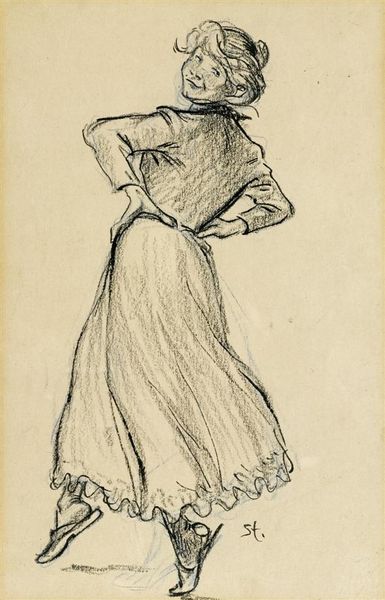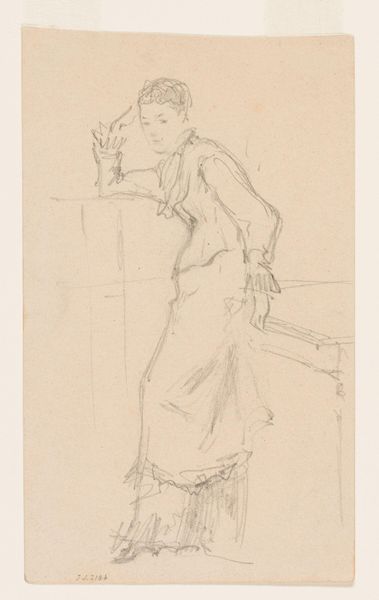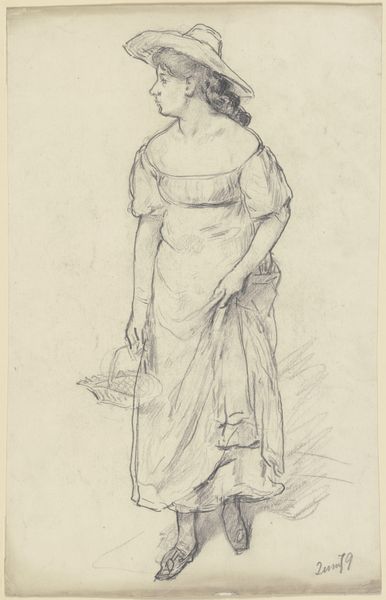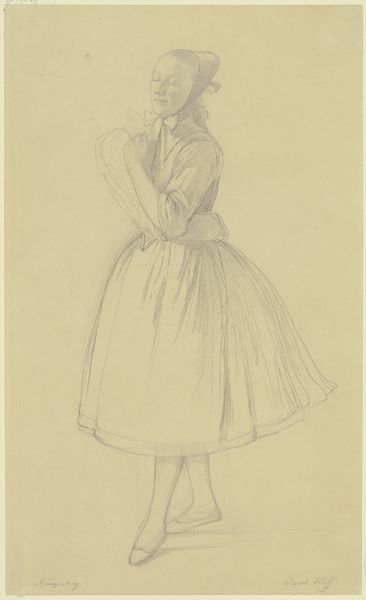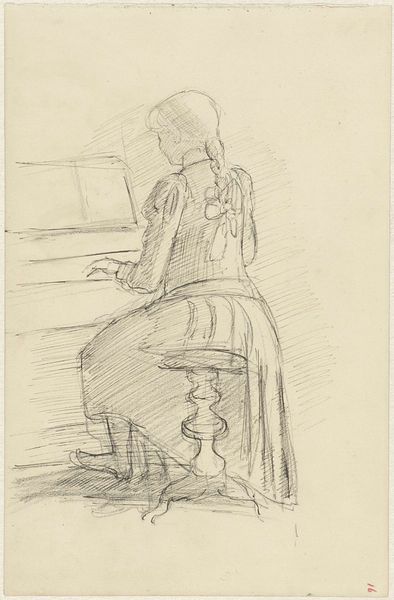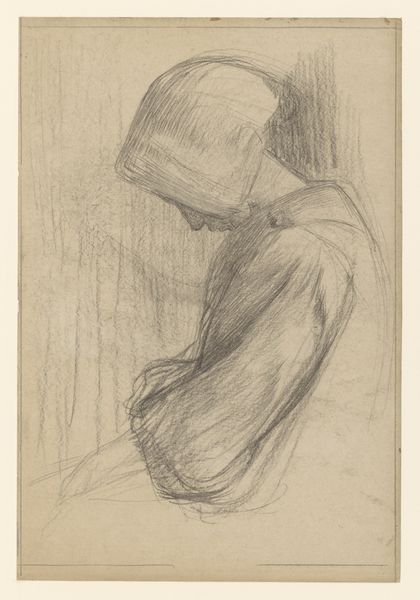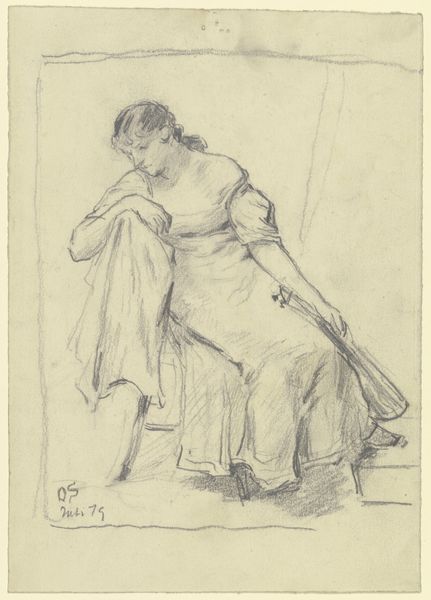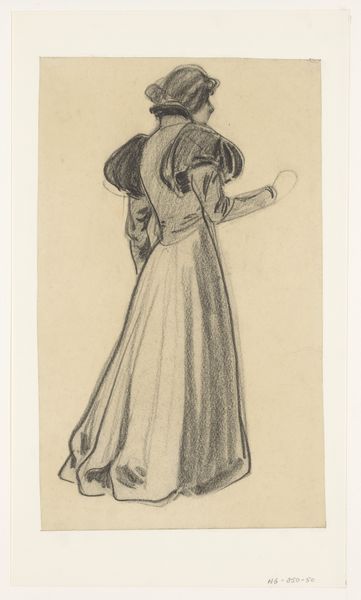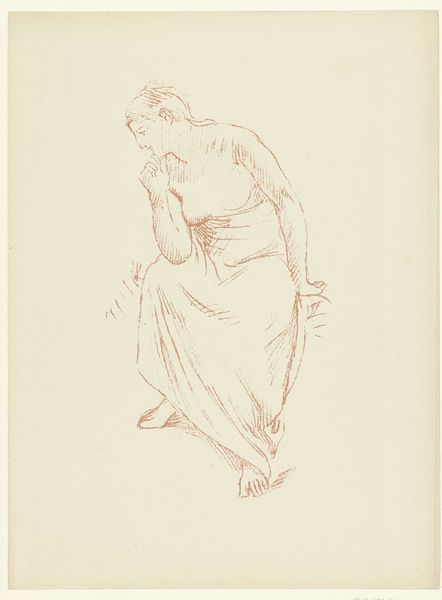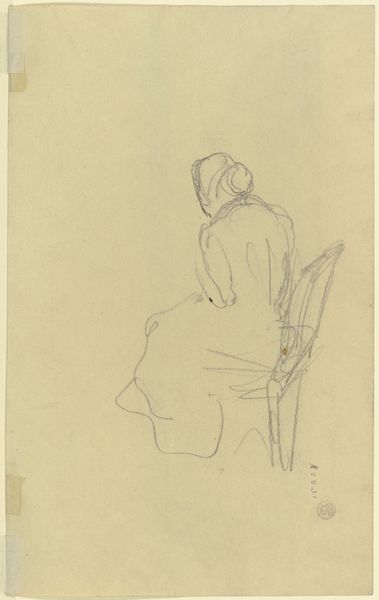
Hessisches Bauernmädchen, ganze Figur, stehend, auf eine Stuhllehne gestützt.
0:00
0:00
drawing, pencil
#
portrait
#
drawing
#
16_19th-century
#
pencil sketch
#
figuration
#
pencil drawing
#
romanticism
#
pencil
#
portrait drawing
#
realism
Copyright: Public Domain
This pencil drawing of a Hessian peasant girl leaning on a chair was made by Johann Jakob Hoff. The girl's posture, head in hand, speaks volumes. This melancholic pose, of supporting one's head with a hand, is a visual language we can trace back through centuries. We see it echoed in depictions of melancholy in medieval illuminated manuscripts. Think of Dürer's "Melancholia I," where the winged figure sits in a similar attitude of introspective pensiveness. The pose transcends mere representation; it becomes a symbol of deep, internal reflection. It's a visual shorthand for the weight of thought, the burden of consciousness. This gesture taps into a collective well of human experience, engaging viewers on a subconscious level, stirring something primal within us. This is the power of the image to resonate beyond its immediate context. We see these symbols resurfacing, evolving, and taking on new meanings, each iteration a reflection of its own unique historical context.
Comments
No comments
Be the first to comment and join the conversation on the ultimate creative platform.

